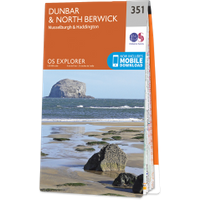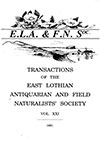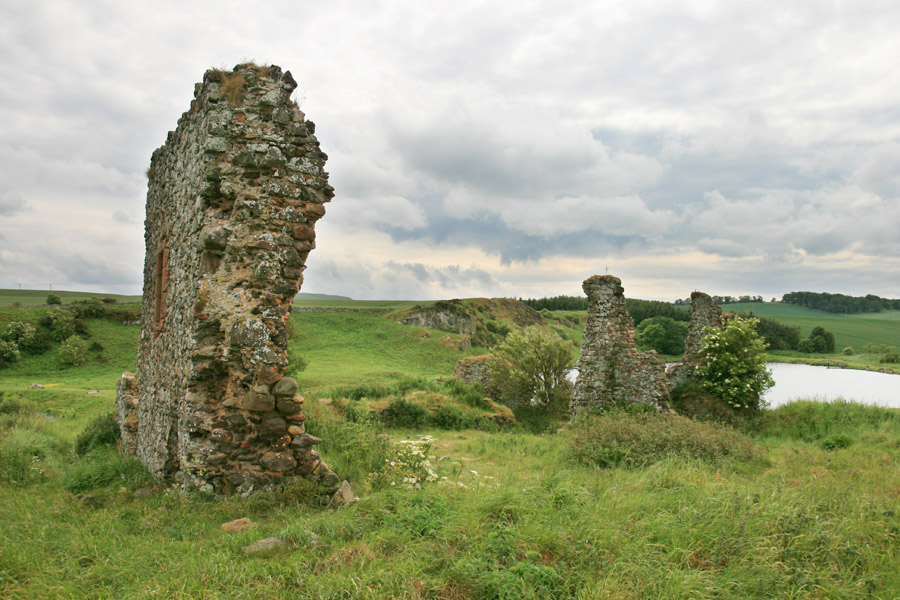

Little is known about Markle Castle, but it was associated with the long-since disappeared medieval village of Markle and a monastic site.
Around 1318 Hugh de Gourley, lord of Merkil, granted to Robert de Lawedir, the carucate of land with toft and croft within the town and tenement of Popil which Roger de Gurlay, his brother, held of him. Amongst the witnesses was Radulph Sautmarays de Popil. Around the same time Sir Hugh Gurlay, described as a steward of Patrick de Dunbar, 9th Earl of March, witnessed a grant by Alexander, John de Lavedre de Popil, to Gilbert of Chockeburn of two oxgates of land in the territory of Popil.
Markle Castle is thought to have been built in the 14th century by the Hepburn family, who owned the nearby Hailes Castle.
In 1401 the castle and village of Markle were attacked by George Dunbar, the 10th Earl of Dunbar and March, who had entered the service of Henry IV of England after a perceived slight on his family’s honour by Robert III.
Markle was one of several towers destroyed by an English force under the Earl of Hertford on the 16th of April 1544, along with Stevenson, Traprain, Kirklandhill, Hetherwick, Belton and Eastbams.
Markle isn’t mentioned during the invasions of 1547 and 1548, so it may be that it wasn’t rebuilt in the intervening years, the Hepburns choosing to stay at Hailes Castle and Waughton Castle.
However in 1588 the castle is mentioned in the Register of the Great Seal of Scotland as in the possession of the Stewarts, suggesting that it was rebuilt, which matches with the 16th century date suggested. The castle appears again in the Great Seal of 1635, but it isn’t mentioned during Cromwell’s invasion of 1650-1651.
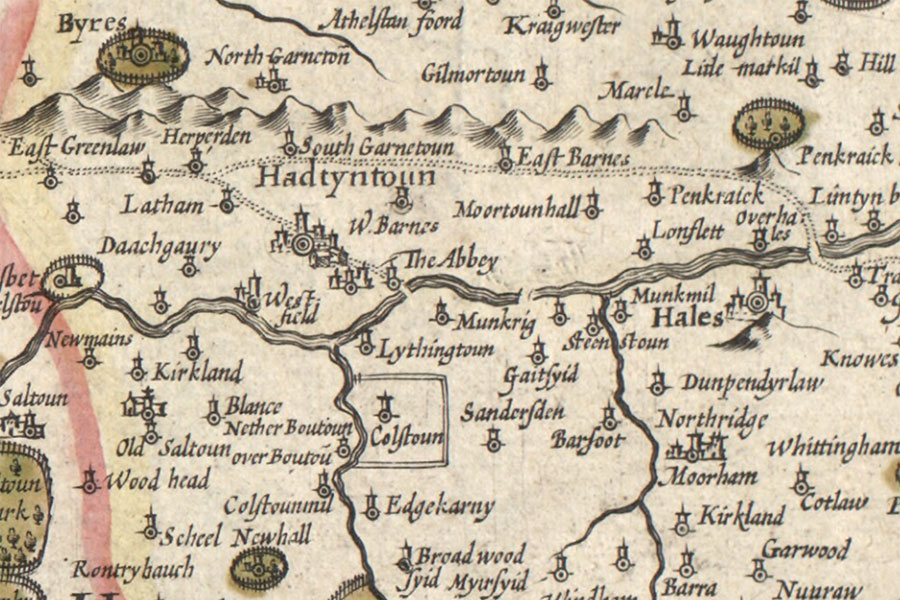
Hendrik Hondius, Amsterdam, 1630map image courtesy of NLS
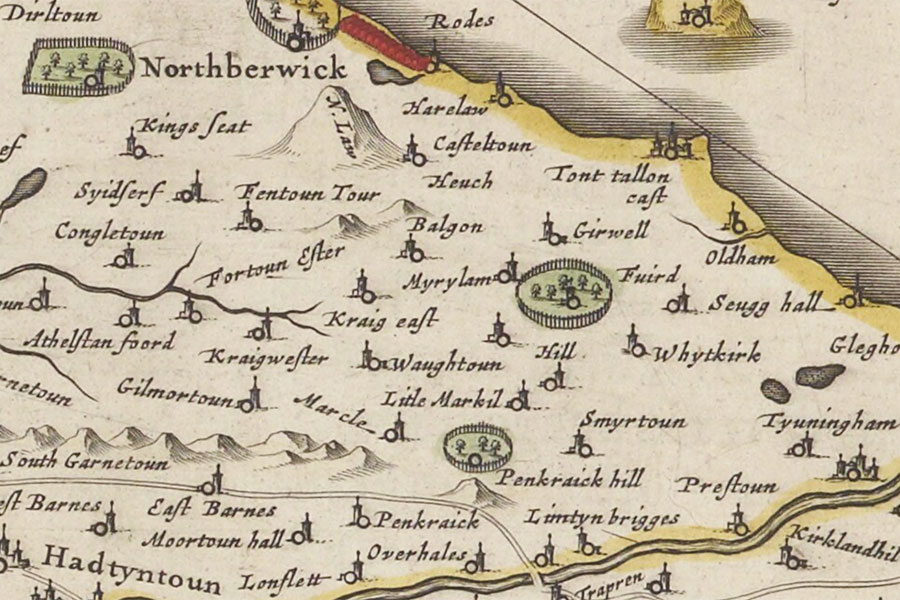
Joan Blaeu, Amsterdam, 1654map image courtesy of NLS
The property was bought by Sir Francis Kinloch in 1655, along with the estates of Gilmerton and Athelstaneford. It is marked on Adair’s’ late 17th century map as a tower named Litle Marcle.

John Adair, 1682map image courtesy of NLS
In 1726 Markle was referred to as “a gentlemans house called Martle, now belonging to Sir Francis Kinloch of Gilmarton“. Markle remained in the Kinloch family into the late 20th century.
The castle stood on a rocky outcrop rising from marshy ground, surrounded by a ditch with inner and outer ramparts. The ramparts enclose an area measuring approximately 260m north-east to south-west by 140m north-west to south-east. The ditch has been cut through at various places, particularly to the north and north-east by a railway, but to the west and north-west it can still be seen that it was around 1.8m deep and 6.0m across. On the inner rampart to the north-north-west are the remains of a stone wall around 0.9m thick, with evidence of round towers projecting from it, suggesting possibly some kind of curtain wall.

Within this is a rectangular building with a vaulted basement. Rubble-built, it measures around 9.5m by 4.6m, with walls 1.0m thick. Although largely a fragmentary ruin, the east gable still stands high enough to show that it had a steep pitched roof, and there is a doorway in the gable end.
It has been suggested that this was an ecclesiastical building, but it may have been some kind of hall house as suggested by evidence of a floor above the doorway.
Built against the inner rampart on the east side is a second substantial building, which has been suggested to be a 16th century laird’s house. Measuring approximately 23.0m east to west by 12.6m north to south, it was rubble built and seems to have risen to at least three storeys in height.
The kitchen was evidently situated at the north end, with a kitchen fireplace visible on that wall. A 13 metre section of the east gable still stands to a height of several metres, and is around 0.8m thick, with a window visible at first floor height.
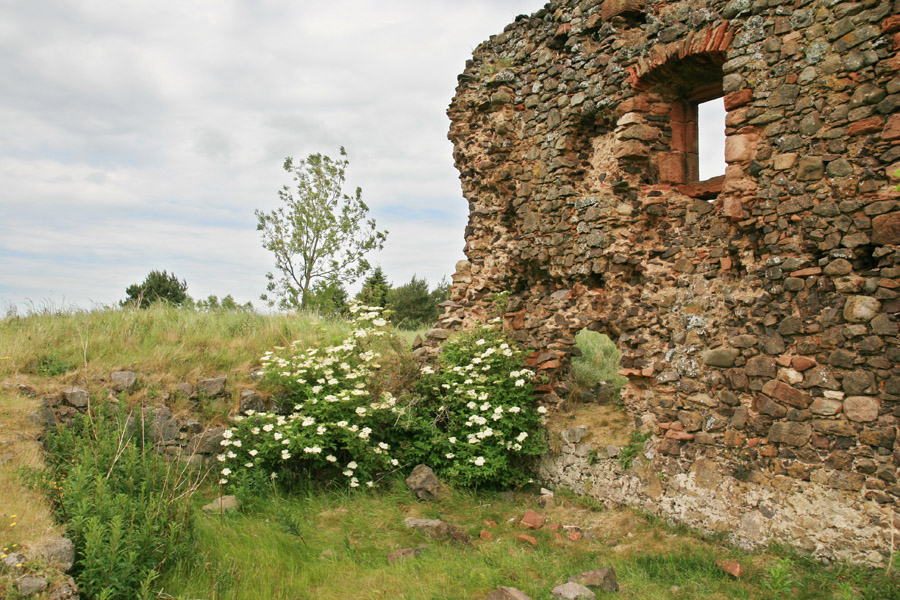

The remains of a rectangular tower stands approximately 15m to the west of this, at the south-west corner of the site. Part of a spiral staircase survives.

Projecting from this tower to the south is another rectangular building measuring around 11.0m long by 3.4m wide, with walls up to a metre thick and a small window in the south gable.
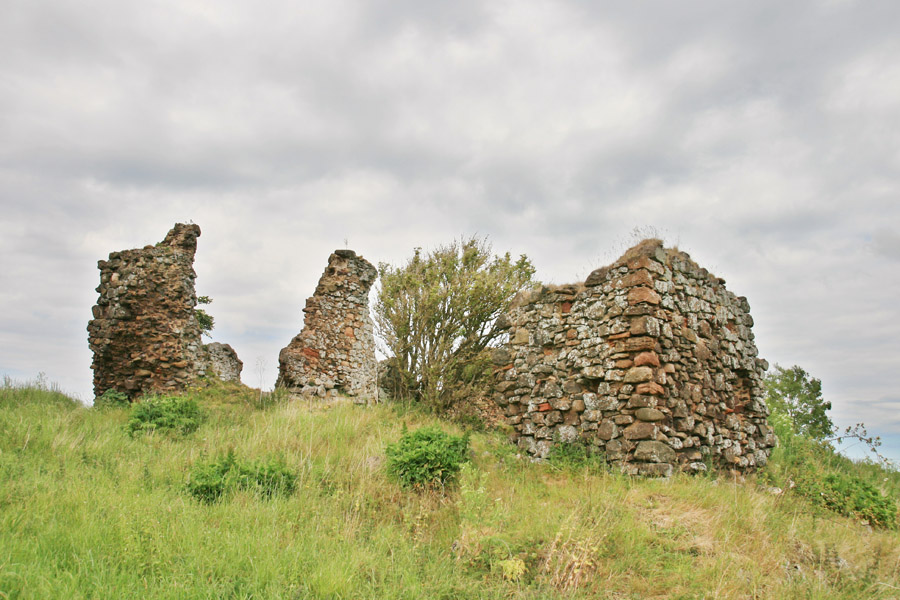
Today Markle is a confused collection of walls, ditches and banks, and the site is next to a fishery.

Alternative names for Markle Castle
Litle Marcle; Litle Markil; Litle-markil; Little Markle; Marcle; Martle; Merkil; Merkill Castle


